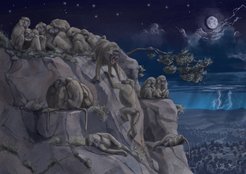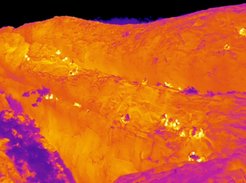The social side of sleep
For many animals sleep is a social activity, but it’s usually studied as an individual process
Group sleeping can impact when animals sleep, how long they sleep for, and how deeply they sleep. For example, groups of meerkats time their sleep according to “sleep traditions”; olive baboons sleep less when their group size increases; bumblebees suppress sleep in the presence of offspring; and co-sleeping mice can experience synchronized REM sleep. To fully understand both sleep and animal social structures, we need to pay more attention to the “social side” of sleep, animal behaviorists argue in an opinion paper publishing September 5 in the Cell Press journal Trends in Ecology & Evolution.

Although many animals sleep in groups, most sleep studies are conducted under laboratory conditions that only consider one animal at a time. These laboratory sleep studies provide high-resolution information on sleep depth and phase, but they are unable to capture the environmental or social contexts in which sleep usually occurs. To understand the interconnections between sleeping and sociality, the researchers say that we need to study groups of sleeping animals in the wild.
“Social sleep is a research frontier that we believe holds exciting potential for new insights into both sleep science and wild animals’ lives,” write the researchers, who include behavioral ecologists Pritish Chakravarty and Meg Crofoot of the Max Planck Institute of Animal Behavior and the University of Konstanz. “We propose a new framework that leverages simultaneous monitoring of the sleep of members of social groups, combined with time-series and social network analyses, to investigate how the social environment shapes (and is shaped by) sleep.”

To study sleep in the wild, the researchers recommend leveraging technologies such as wearable or implantable accelerometers, which provide information on animal movements with video or direct observations of the animals’ behavior. Pairing this sleep data with measurements of the group’s social networks like dominance hierarchies and kinship relationships, for example, could provide important ecological and evolutionary insights into the impact of sleep on the fitness and survival of both individual and groups of animals, the researchers say.
“It is likely that key aspects of group behavior, including coordination, decision-making, and cooperative potential, will be influenced by the sleep of its members,” they write. “By collecting data on sleep and sociality and applying our proposed tools to analyze social sleep, we can begin unraveling the adaptive functions and evolutionary trade-offs of sleep that may not be revealed by studying individual animals alone.”
By Liana F. Wait, republished from CELL press













